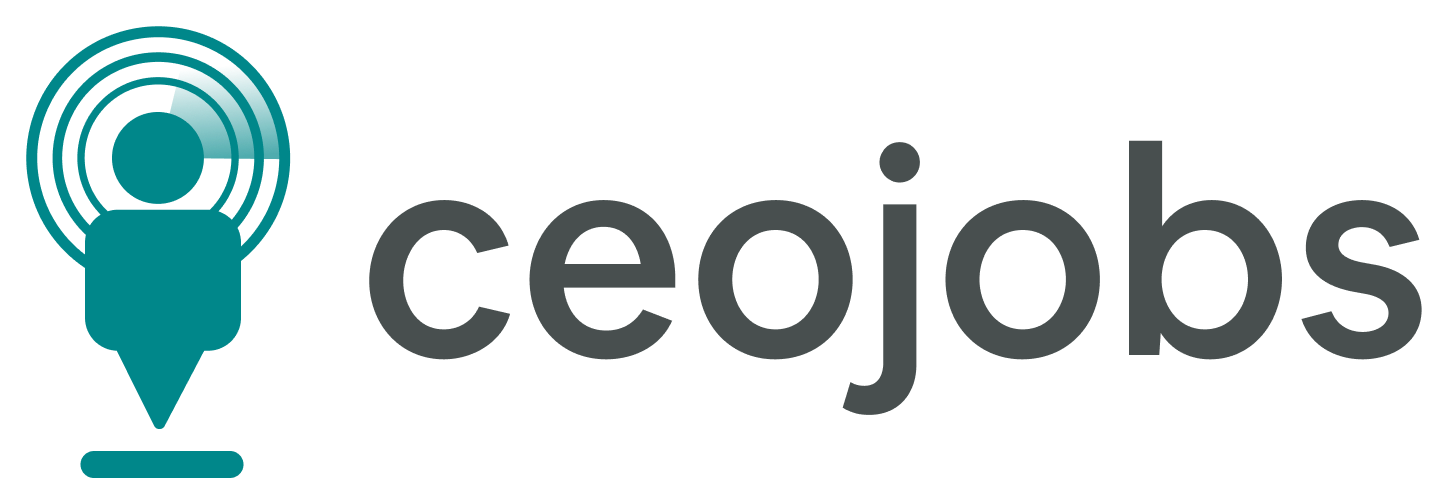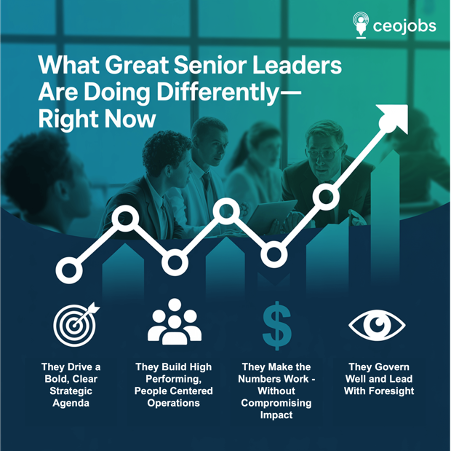𝗕𝘂𝗶𝗹𝗱𝗶𝗻𝗴 𝘁𝗵𝗲 𝗙𝘂𝘁𝘂𝗿𝗲: 𝗧𝗵𝗲 𝗥𝗶𝗴𝗵𝘁 𝗟𝗲𝗮𝗱𝗲𝗿 𝗮𝘁 𝘁𝗵𝗲 𝗥𝗶𝗴𝗵𝘁 𝗧𝗶𝗺𝗲
Popular Post
Tags

𝗕𝘂𝗶𝗹𝗱𝗶𝗻𝗴 𝘁𝗵𝗲 𝗙𝘂𝘁𝘂𝗿𝗲: 𝗧𝗵𝗲 𝗥𝗶𝗴𝗵𝘁 𝗟𝗲𝗮𝗱𝗲𝗿 𝗮𝘁 𝘁𝗵𝗲 𝗥𝗶𝗴𝗵𝘁 𝗧𝗶𝗺𝗲
Ensuring that an organisation has the right leadership at the right time is as crucial for the organisation as it is for the individual leader. While this may seem like an obvious statement, too often, recruiting officials are swayed by a well-crafted CV and an impressive track record. Candidates who excel in an interview process are not necessarily the best fit for the specific needs of the organisation.
We see this dynamic play out frequently in professional sports. A highly successful manager may be lured to a new team that is willing to pay a premium based on past achievements. The decision seems justified by their track record, yet prior success in one organisation does not always translate into continued success in a different environment. The same principle applies in business leadership.
To mitigate this risk, organisations sometimes outsource their executive hiring to recruitment firms. While many recruitment professionals have commendable intentions and expertise, the industry often operates on a commission-based model tied to the remuneration of the successful candidate. This creates an inherent conflict of interest — like how a real estate agent’s commission is linked to the selling price of a property. The key question then becomes: in whose interest are these third parties ultimately working? Understandably, their primary focus is on their own success, which may not always align perfectly with the long-term success of the hiring organisation.
How Can Organisations Ensure the Right Leadership Fit?
Before launching an executive search, organisations must first lay the groundwork internally. A well-defined, strategic framework can make all the difference.
1. Align on the Vision and Mission of the Organisation
· Assess the organisation’s stage in its life cycle and growth trajectory.
· Define strategic priorities and the leadership style best suited to drive them forward.
2. Conduct a Capability Gap Analysis
· Identify the specific skills and expertise needed to achieve business goals.
· Evaluate the strengths and weaknesses of the existing leadership team to pinpoint key gaps.
3. Align the Role with Organisational Needs
· Clearly define the role, responsibilities, and success metrics.
· Ensure the role is structured to address both present and future challenges.
Implementing a Compatibility Framework
A successful leadership hire requires more than just technical competency—it requires motivation, cultural fit, and alignment with business strategy. The CAN, WILL, FIT framework provides a structured evaluation approach:
CAN – Does the Candidate Have the Ability to Do the Job?
Most hiring processes focus on this aspect, but it must go beyond surface-level assessments:
· Education – Balancing formal qualifications with practical experience; considering technical and commercial expertise.
· Experience – Assessing relevance based on industry, company type, functional exposure, and complexity of past roles.
· Knowledge – Evaluating key insights required for both present and future success, from digital expertise to geographical awareness.
· Competencies – Ensuring alignment with the organisation’s competency framework, which is often overlooked in hiring decisions.
· Skills and Abilities – Identifying essential capabilities, including cognitive skills and problem-solving approaches.
WILL – Is the Candidate Motivated to Excel in This Role?
Even the most technically capable leader will underperform if they lack motivation. Key factors influencing motivation include:
· Business Opportunity – Does the candidate see this as a chance to make an impact?
· Strategic Alignment – Are they driven by the company’s mission, industry, and product portfolio?
· Personal Factors – Does the role fit their career aspirations, location preferences, and overall expectations?
FIT – Is the Candidate a Cultural and Organisational Match?
Cultural misalignment is one of the biggest reasons executives fail. Evaluating fit is just as critical as assessing capability and motivation:
· Organisational Culture Fit – Do their values align with company norms? Cultural fit assessments and structured interview questions can be invaluable.
· Personality Fit – How well do they align with leadership styles, industry dynamics, and customer expectations? Personality assessments and qualitative discussions help uncover alignment.
Mastering the 4S’s of Strategic Hiring
Hiring the right Senior Business Leader requires an expert approach. Many recruiters and head-hunters lack the depth of experience necessary to identify the best fit. Following the 4S’s ensures a more effective selection process:
1. Specify – Take the time to craft a well-defined job description, incorporating future growth needs, cultural considerations, and competency requirements.
2. Source/Search – Invest in high-quality search processes, leveraging both traditional recruitment and strategic networking to identify the strongest candidates.
3. Screen – Ensure recruiters and hiring managers are trained in structured screening tools, including behavioural-based interviewing (BBI).
4. Select – Approach final selection and employment agreements with professionalism to secure commitment and motivation from the chosen leader.
The Critical Decision: Managing the Process or Engaging a Headhunter?
Leadership hiring is one of the most critical decisions your organisation will make—it shapes your future trajectory and ability to achieve long-term ambitions.
If you choose to manage the process internally, follow our structured approach to ensure you hire a candidate who is the right fit for a well-defined, detailed job profile.
If you decide to work with a headhunter, selecting the right one is non-negotiable. A strong headhunter should:
· Possess deep SBL hiring expertise to understand your leadership context.
· Be capable of defining the opportunity in a way that attracts the right talent.
· Be highly trained and skilled in advanced interview techniques and testing methodologies.
· Offer a fair, transparent, and results-driven pricing model. There’s no need to pay exorbitant fees filled with clauses that remove success accountability. A 10% value proposition from a quality headhunter is reasonable—don’t let them tell you otherwise.
Frequently Asked Questions
-
Q: Q1: Why does previous leadership success not always predict future success
A: A1: Because leadership effectiveness depends on alignment with the organisation’s unique needs, culture, and strategic challenges—not just past accomplishments.
-
Q: Q2: What’s the main risk in using third-party recruiters or headhunters for executive hiring?
A: A2: Recruitment firms often operate on commission-based models tied to candidate compensation, potentially causing conflicts of interest and prioritising short-term gains over long-term organisational fit.
-
Q: Q3: Why is it crucial for organisations to clearly define their strategic priorities before hiring senior leaders?
A: A3: Clear strategic alignment ensures the chosen leader’s skills, experiences, and style match the organisation’s growth goals, culture, and future challenges.
-
Q: Q4: How can organisations reduce the risk of cultural misalignment when hiring senior leaders?
A: A4: Organisations should conduct structured cultural assessments and in-depth personality evaluations, alongside traditional competency checks, to ensure strong cultural alignment.
-
Q: Q5: What is the CAN, WILL, FIT framework, and why is it valuable in executive hiring?
A: A5: It evaluates candidates on their Capability (CAN), Motivation (WILL), and Organisational Fit (FIT), ensuring a balanced assessment of technical ability, personal drive, and cultural alignment.
-
Q: Q6: What is often overlooked in hiring processes focused solely on a candidate’s capability?
A: A6: Factors like genuine motivation, personal aspirations, strategic alignment, and cultural compatibility are frequently underestimated or overlooked, leading to hiring missteps.
-
Q: Q7: How can organisations accurately assess whether a candidate is genuinely motivated for a leadership role?
A: A7: By probing their alignment with business opportunities, strategic goals, and personal motivations through structured interviews, motivational questioning, and transparent discussions about expectations.
-
Q: Q8: What are the "4S’s of Strategic Hiring," and why are they important?
A: A8: The 4S’s—Specify, Source/Search, Screen, and Select—outline a structured approach to clearly defining roles, attracting strong talent, effectively screening candidates, and securing the right hire, reducing hiring risks.
-
Q: Q9: When should an organisation consider managing executive hiring internally versus engaging an external headhunter?
A: A9: Internal management is ideal when the organisation has strong hiring capabilities, structured processes, and clear strategic clarity. External headhunters are valuable when specialised expertise, broader market access, and sophisticated assessment techniques are needed.
-
Q: Q10: What traits distinguish a high-quality executive headhunter from others in the market?
A: A10: Exceptional headhunters have deep expertise in senior leadership roles, proficiency in advanced assessment methods, strategic clarity in defining roles, transparent pricing models, and genuine accountability for results rather than simply focusing on filling positions quickly
Post a Comment
Get New Job Notifications
Subscribe & get all related jobs notifications



.png)

Comments (0)